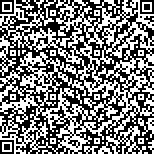| Quote
: |
周彬,范瑜洁,聂颖,夏帅帅,张伟,李亮.补阳还五汤联合BMSCs移植对脊髓损伤气虚血瘀证红核神经元的影响[J].湖南中医药大学学报英文版,2019,39(5):568-572.[Click to copy
] |
|
| |
|
|
| This paper
:Browser 2696times Download 990times |
| 补阳还五汤联合BMSCs移植对脊髓损伤气虚血瘀证红核神经元的影响 |
| 周彬,范瑜洁,聂颖,夏帅帅,张伟,李亮 |
| (湖南省脑科医院, 湖南 长沙 410007;湖南中医药大学第一附属医院, 湖南 长沙 410007;湖南中医药大学中医诊断学湖南省重点实验室, 湖南 长沙 410208;湖南中医药大学中西医结合学院, 湖南 长沙 410208) |
| 摘要: |
| 目的 探讨补阳还五汤(Buyang Huanwu Decoction,BYHWD)联合骨髓间充质干细胞(bone marrow mesenchymal stem cells,BMSCs)移植对保护脊髓损伤(sipnal cord injury,SCI)气虚血瘀证红核神经元是否能产生协同增效作用。方法 将30只雄性SD大鼠随机分为5组:正常组、气虚血瘀组、BYHWD组、BMSCs组、BYHWD+BMSCs组,每组6只。采用游泳力竭法联合红核脊髓束(rubrospinal tract,RST)横断手术制备气虚血瘀证大鼠模型,并予以相应干预。通过斜板实验观察运动功能恢复情况,尼氏染色观察红核神经元胞体形态及数量,在RST横断点上方注射荧光金(FG)进行神经束路示踪,观察红核神经元胞体形态及数量。结果 术后14 d、28 d,BYHWD+BMSCs组斜板实验评分高于气虚血瘀组、BYHWD组及BMSCs组(P<0.05或P<0.01)。尼氏染色显示与正常组相比,气虚血瘀组尼氏体体积及数量减少,胞浆染色较浅;BYHWD组、BYHWD+BMSCs组的情况优于气虚血瘀组,尤其是BYHWD+BMSCs组。FG逆行示踪显示气虚血瘀组胞体荧光强度减弱、形态不规则、边缘模糊不清,且红核正常神经元数目较正常组明显减少(P<0.01),BYHWD组、BMSCs组、BYHWD+BMSCs组较模型组增加(P<0.01),特别是BYHWD+BMSCs组(P<0.01)。结论 BYHWD联合BMSCs移植对保护SCI气虚血瘀证逆行性溃变的红核神经元能产生协同增效作用。 |
| 关键词: 补阳还五汤 骨髓间充质干细胞 脊髓损伤 气虚血瘀证 红核脊髓束 |
| DOI:10.3969/j.issn.1674-070X.2019.05.002 |
| Received:June 23, 2018 |
| 基金项目:国家自然科学基金(81302899);湖南省自然科学基金(2018JJ2289);湖南省中医药科研计划项目(2013111);湖南中医药大学中医诊断学国家重点学科开放基金(2014-37,2015ZYZD08) |
|
| Effects of Buyang Huanwu Decoction Combined with BMSCs Transplantation to Red Nucleus Neurons in Spinal Cord Injury with Qi-deficiency and Blood-stasis Syndrome |
| ZHOU Bin,FAN Yujie,NIE Ying,XIA Shuaishuai,ZHANG Wei,LI Liang |
| (Hunan Brain Hospital, Changsha, Hunan 410007, China;The First Affiliated Hospital of Hunan University of Chinese Medicine, Changsha, Hunan 410007, China;Provincial Key Laboratory of TCM Diagnostics, Hunan University of Chinese Medicine, Changsha, Hunan 410208, China;College of Integrated Chinese and Western medicines, Hunan University of Chinese Medicine, Changsha, Hunan 410208, China) |
| Abstract: |
| Objective To observe whether Buyang Huanwu Decoction (BYHWD) combined with bone marrow mesenchymal stem cells (BMSCs) transplantation could be cooperative remarkably for protection to red nucleus neurons in spinal cord injury (SCI) with Qi-deficiency and blood-stasis syndrome. Methods Totally 30 male rats were randomly divided into the following 5 groups:a normal group, a Qi-deficiency and blood-stasis group, a BYHWD group, a BMSCs group, a BYHWD+BMSCs group, with 6 rats in each group. The rat model of Qi-deficiency and blood-stasis syndrome was established by swimming exhaustion combined with the transection of rubrospinal tract (RST), and giving corresponding intervenes. The recovery of motor function was observed by inclined plate test, and the morphology and number of red nucleus neurons were observed by Nissl staining. The nerve tract was traced by injection of fluorescent gold (FG) above the RST transection point, and the morphology and number of red nucleus neurons were observed. Results At 14 d and 28 d after operation, the oblique plate test scores of the BYHWD + BMSCs group were higher than those of the Qi-deficiency and blood-stasis group, the BYHWD group and the BMSCs group (P<0.05 or P<0.01). Compared with the normal group, Nissl staining showed that the volume and quantity of Nissl body in the Qi-deficiency and blood-stasis group was decreased, and the cytoplasmic staining was shallow; the situation of the BYHWD group and the BYHWD + BMSCs group was better than that of the Qi-deficiency and blood-stasis group, especially the BYHWD + BMSCs group. FG retrograde tracing showed that the fluorescence intensity was weakened, the shape was irregular and the edge was blurred in the the Qi-deficiency and blood-stasis group, and the number of normal neurons in the red nucleus was significantly decreased compared with the normal group (P<0.01), while the number of normal neurons in the BYHWD group, the BMSCs group and the BYHWD+BMSCs group was increased compared with the model group (P<0.01), especially in the BYHWD + BMSCs group (P<0.01). Conclusions BYHWD combined with BMSCs transplantation can cooperate remarkably to protect red nucleus neurons in retrograde degeneration of SCI with Qi-deficiency and blood-stasis syndrome. |
| Key words: Buyang Huanwu Decoction bone marrow mesenchymal stem cells spinal cord injury Qi-deficiency and blood-stasis syndrome red nucleus spinal tract |
|

二维码(扫一下试试看!) |
|
|
|
|


